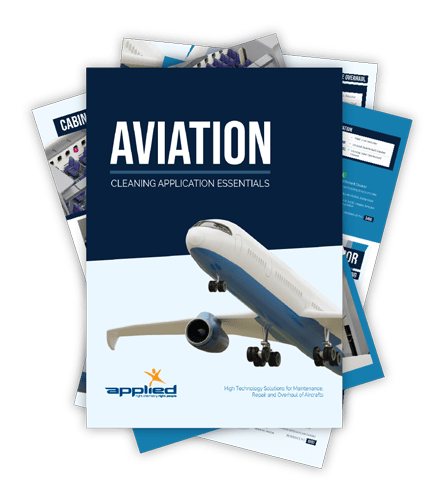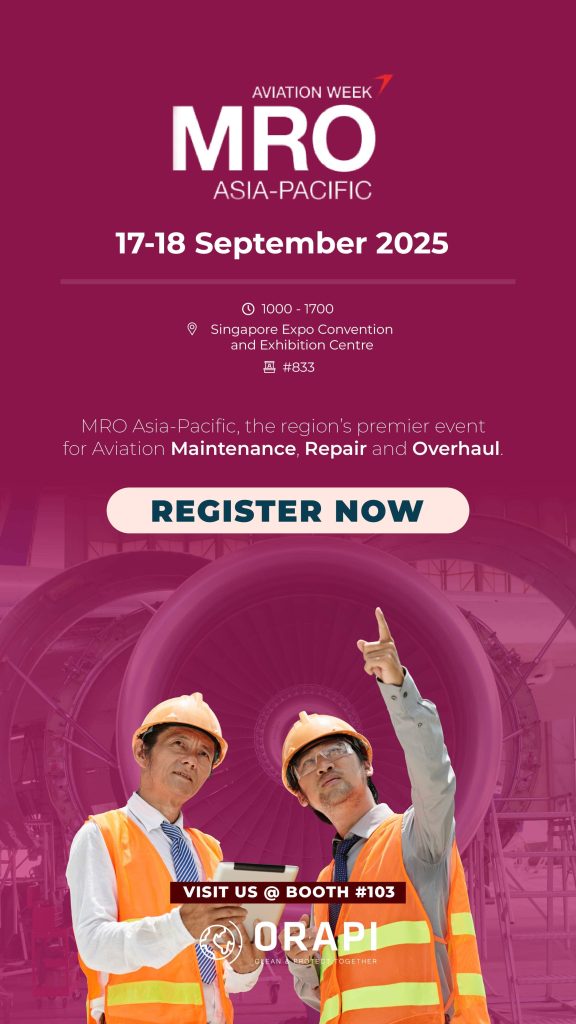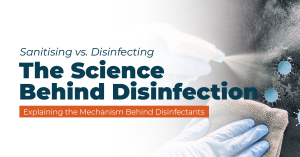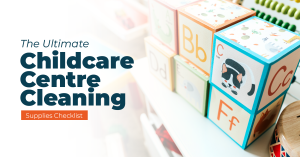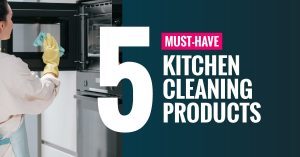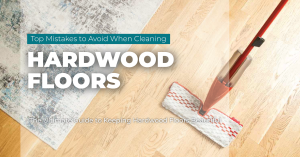
Selecting new cleaning agents for application in aviation maintenance, repair, and overhaul (Aviation MRO) establishments involves significant hazards due to the potential repercussions of an unwise selection. Such a choice could lead to substantial and costly consequences, affecting aircraft operability and safety over the long term, as well as posing risks to human health and the environment. Regulatory fines could also be imposed in cases of non-compliance.
Once these challenges have been addressed, should the selected product prove ineffective in its designated role, additional expenses will arise from prolonged maintenance durations, the potential for sub-optimal maintenance outcomes, and ongoing expenditures related to cleaning chemicals.
Considering MRO operations’ diverse array of cleaning responsibilities, each cleaning solution will exhibit varying degrees of suitability for specific tasks. Nevertheless, seven crucial attributes need to be evaluated against the intended usage and alignment with the regulatory standards of the business location.
We have outlined the seven key criteria below to facilitate this assessment process.
Criterion 1: Evaluating the Aviation Compatibility of a Solvent Degreaser

No aviation MRO professional would deliberately endanger aircraft or passengers. Yet, the responsibility of selecting aircraft cleaning agents goes beyond moral obligation. FAA regulations dictate that chemicals employed on aeroplanes must undergo specific tests to meet aviation standards. Although the FAA proposes a range of acceptable tests, they also permit the acceptance of equivalent tests through formal application.
Aircraft manufacturers’ maintenance documentation enumerates approved cleaning agents by name or notes the required standards for cleaning products used on their planes. These manufacturers, endorsed by the FAA, typically establish testing criteria that serve as authoritative references in manuals. Adhering to these guidelines is paramount for MRO units to ensure compliance with regulations.
When assessing a novel aviation cleaner, the manufacturer must certify its alignment with FAA or manufacturer-conducted qualifying tests. It’s worth noting that some products might excel in most aspects of a given test but falter in other areas. For instance, a cleaner could pass corrosion tests but fail the acrylic crazing component. While still usable, caution would be necessary where exposure to acrylic components may occur.
Criterion 2: Assessing the Impact of an Aviation MRO Degreaser on Human Health

In the late 20th and early 21st centuries, increased attention has been directed towards workers’ exposure to chemicals. Cleaning agents, once effective, have shown harm to health with prolonged use. This heightened scrutiny led to greater safety measures, raising costs for businesses. Investments in protective gear, environmental management, exposure monitoring, and certified disposal became essential. In response, the aviation cleaning chemical industry developed safer alternatives for clients seeking benign options.
Aviation MRO companies watch out for certain ingredients such as n-propyl bromide (nPB), methylene chloride, trichloroethylene (TCE), and perchloroethylene (perc). If selected for use, you should bear in mind that the safety compliance and disposal costs associated with using them outweigh their lower purchase price.
The potential risk posed by a solvent to individuals is frequently characterised using the Threshold Limit Value (TLV) system. TLVs represent the suggested average exposure over an 8-hour workday and a 40-hour workweek. These limits are typically established by the American Conference of Governmental Industrial Hygienists (ACGIH) and are quantified in Parts Per Million (PPM).
The lower the TLV of a particular substance, the less a worker can be exposed to without harmful effects. This value is listed on the MSDS of chemical products and is accompanied by recommended safety gear. Organisations are responsible for using these chemicals to equip their facilities and staff with the necessary tools to keep exposure levels below the TLV.
Here are the four prevalent industrial solvents along with their exposure limits as defined by the ACGIH, an authoritative body whose guidelines are meticulously adhered to by the US Occupational Safety and Health Administration (OSHA):
- N-propyl bromide (nPB) – 0.10 ppm
- Methylene chloride – 50 ppm
- Trichloroethylene (TCE) – 10 ppm
- Perchloroethylene (perc) – 25 ppm
N-propyl Bromide
N-propyl bromide is a common ingredient in metal cleaners and degreasers, but research has found that it can negatively affect the central and peripheral nervous systems and the blood. Recently, the US Environmental Protection Agency released a report on the risk evaluation of 1-bromopropane (nPB), which concluded that the chemical poses an unreasonable risk in 16 different scenarios, including its various uses. Some of those conditions of use include:
- Industrial and consumer use for cleaning and degreasing
- Vapour degreasers – open-top and inline
- Liquid immersion cleaners
- Aerosol spray degreaser/cleaner
- Automotive degreasers – i.e. for engines, brakes
Methylene Chloride
Methylene chloride is commonly used for industrial purposes such as metal cleaning and degreasing. Its potential occupational carcinogenic properties make it a hazardous substance that can pose a threat to the liver, kidney, and reproductive system. Additionally, it can adversely affect the nervous system and lead to the development of liver, brain, and lung cancers, as well as non-Hodgkin’s lymphoma.
Trichloroethylene
Trichloroethylene exhibits remarkable efficacy in dissolving organic substances such as fats and greases, rendering it highly compatible with various cleaning applications. Nonetheless, TCE’s classification as a potential carcinogen raises concerns, with research indicating its potential involvement in conditions such as birth defects, testicular cancer, leukaemia, and pulmonary tumours.
Perchloroethylene
Perchloroethylene is frequently found in dry cleaning solutions and is utilised in metal degreasing processes, as well as for removing wax from metal surfaces before plating. Brief exposure to elevated concentrations of perchloroethylene can impact the central nervous system, potentially resulting in loss of consciousness and fatality.
Criterion 3: Environmental Consequences of an Aviation MRO Degreaser

Using cleaning chemicals has raised environmental concerns such as atmospheric ozone depletion, air pollution, and inadequate hydrophobic properties. As more information about the lasting impact of certain ingredients in cleaning products is revealed, governments worldwide have taken steps to regulate potentially harmful substances to the environment.
Ozone Depletion
It is important to note that ozone-depleting solvents are no longer in use due to the regulations set by the Montreal Protocol. While this may not be a concern when assessing new solvents, it may still be relevant when looking at older specifications within your organisation.
There are two types of ozone-depleting chemicals: halogenated (containing halogen) and chlorinated (using chlorine). Many cleaning and degreasing products rely on halogen and chlorine to remove grease effectively.
Previously, hydrochlorofluorocarbons (HCFC) and chlorofluorocarbons (CFC) were commonly used but have since been phased out worldwide. Although products containing CFC-113 (Freon 113), HCFC-225 (AK225), and HCFC-141b may still be found in older specifications, they should not be considered due to their negative impact on the ozone layer and limited availability in the marketplace.
Global Warming
Greenhouse gases are defined by the US Environmental Protection Agency (EPA) as substances that insulate the Earth by absorbing energy and slowing down the rate at which energy escapes to space. Their effect on the environment can vary depending on their radiative efficiency and lifetime. The Global Warming Potential (GWP) provides a way to measure the global warming impact of different gases. It measures the energy that one ton of gas will absorb over 100 years compared to carbon dioxide, which has a GWP of 1.
Chemicals with a GWP of 100 have 100 times the global warming potential of CO2. However, ORAPI has developed products with a low GWP that comply with all fluorinated greenhouse gas regulations in the European Union, one of the world’s most stringent global warming regulations. These products are designed to provide optimal cleaning performance while meeting regulatory requirements and are suitable for use in any MRO facility, regardless of location.
Volatile Organic Compounds (VOCs)
Certain cleaning products contain volatile organic compounds (VOCs) that react photochemically and can lead to the creation of ozone and smog in the lower atmosphere when exposed to sunlight, nitrogen oxide, and carbon monoxide. To regulate the release of VOCs, the Environmental Protection Agency (EPA) in the United States has implemented guidelines, and many cleaning product manufacturers are now using non-photochemically reactive chemicals to avoid VOC emissions.
The Environmental Protection Agency (EPA) oversees the monitoring of hazardous air pollutants (HAPs) through national emissions standards (NESHAPs). These substances are suspected or known to cause serious health concerns like cancer, congenital disabilities, or environmental damage. Examples of such chemicals include benzene, Perc, and methylene chloride. Aviation organisations that emit more than 10 tons of single HAPs or 25 tons of combined HAPs annually are regulated by the EPA’s NESHAPs. This regulation only affects larger aviation entities.
Aviation cleaning solutions of today have been made to avoid halogenated or chlorinated elements and instead use non-photochemically reactive chemicals. This exempts them from being regulated by the EPA and the federal government. ORAPI has developed products that not only meet these stringent requirements but also offer excellent cleaning capabilities while adhering to the regulations on vapour pressure.
Criterion 4: Flammability
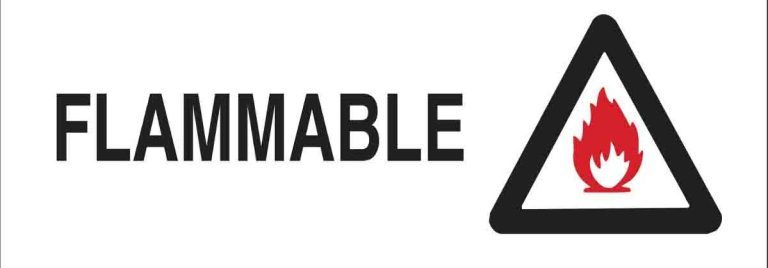
Before we get into the fourth criterion, it is important to understand the distinction between the terms “combustible,” “flammable,” and “flashpoint”. Combustible materials can be ignited with effort, while flammable substances readily catch fire at typical temperatures, and the flashpoint is the temperature at which volatile vapours ignite upon contact with an ignition source.
Although seemingly semantic, these distinctions profoundly impact the selection of a cleaning product. Considerations include the proximity of energised electrical equipment or ignition sources near the cleaning area. When these factors are present, a nonflammable cleaner is crucial. Even less obvious ignition sources, such as cleaning hot gas turbine engines, demand a high or no flashpoint cleaner.
Criterion 5: Dielectric Breakdown Resistance

If you intend to choose a cleaner for electrical devices, you must consider the product’s dielectric strength. It refers to the maximum electric field an insulating substance can endure before its insulating properties give way. If the insulation capabilities of your cleaning product falter, the electrical current might find its way back to the operator or the aircraft, resulting in damage to the area undergoing cleaning.
Ideally, all active equipment should be powered down before undergoing cleaning procedures. However, if circumstances prevent this course of action, your chosen product must possess a dielectric strength of 30,000 volts or higher.
Criterion 6: Cleaning Ability

For optimal maintenance inspection results, meticulous aircraft cleanliness is imperative. Failing to sufficiently eliminate contaminants can yield one of two outcomes:
1. Increased likelihood of maintenance technicians overlooking corrosion, cracks, and wear.
2. It is necessary for maintenance technicians to perform spot cleaning within their workspace to ensure a thorough inspection.
The former directly impacts maintenance efficacy, while the latter results in expenses due to prolonged timelines and compromised maintenance efficiency. Within an airline operation, two key facets contribute to cleaning efficiency: the number of coating applications required and the time invested.
Distinguishing the effectiveness of the cleaning process and the cleaning agents themselves is an important factor when selecting cleaning products. The number of coatings necessary for an effective cleaning regimen translates to added time and expenses. For instance, this could involve multiple applications of the same cleaning solution to ensure complete soil removal or the application of an alkaline cleaner followed by a neutralising agent to guard against corrosive degradation.
The dwell time of a cleaning agent denotes the duration needed to adequately saturate the soil layer on a surface, preparing it for removal through mechanical action and subsequent rinsing. Cleaning agents with longer dwell times are as effective as those with shorter dwell times. However, excessively long dwell times can lead to undesirable aircraft operational or maintenance delays. When faced with the choice between two nearly identical cleaning agents, these considerations can significantly influence the decision-making process.
Criterion 7: Price

Conclusion: Aviation MRO Selection Criteria
In conclusion, selecting cleaning agents for aviation maintenance, repair, and overhaul (MRO) operations holds immense significance, with potential hazards and consequences that stretch beyond mere operational considerations. The ramifications of a poorly chosen cleaning product can extend to aircraft safety, human health, and environmental impact. Regulatory compliance and adherence to stringent standards are imperative, as is the recognition of the complex interplay between aviation compatibility, human health implications, ecological effects, flammability, dielectric breakdown resistance, cleaning efficacy, and price. Striking the right balance among these criteria ensures not only effective maintenance but also safeguards against costly repercussions, making the careful evaluation and selection of cleaning agents an essential aspect of responsible and sustainable aviation MRO practices.
Complete list of Aircraft MRO + Cleaning Products under 1 Download
